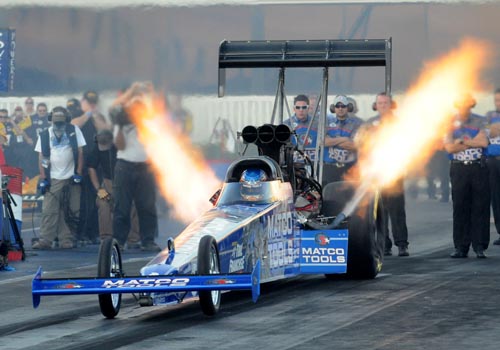You might think that Buicks are always big, but history tells us that this isn't necessarily so. Way back in 1975, Buick introduced a version of the Chevy Monza called the Skyhawk. It was some twenty inches shorter than any other Buick model at the time and was powered by General Motors' newly resurrected V-6 (the tooling for which had been sold to American Motors in the late '60s). The two-door Skyhawk does not look pretty through our 2012 lens, but then again, not much from 1975 does. The quad-headlamp, rear-wheel-drive hatchback was a quick and easy way for Buick, whose sales plummeted after the 1973 OPEC oil embargo, to sell a more fuel-efficient car. Americans, by and large, would hear nothing of such a cobbled-together contrivance, and Skyhawk sales were but a blip. The nameplate was discontinued after 1980 but was brought back on a front-wheel-drive J-car in 1982. That car sold well, but we'd venture that no Skyhawk will ever grace the lawn at the Pebble Beach Concours d'Elegance.
Fast-forward to the 2011 Detroit auto show, where Buick unveiled the Verano -- which is derived from GM's global Delta platform that also underpins the Chevrolet Cruze compact -- and said that it was ready to compete in the compact luxury-sedan segment against cars such as the Lexus IS250 and the Audi A3. Neither one of those is a particularly big seller, so the comparison does little to dissuade one from thinking that the Verano is chasing after a very narrow slice of the luxury-sedan pie. Nor does it help define who, exactly, Buick's intended Verano audience is. No matter; it didn't cost GM much to create the Verano, because the underlying engineering for the Delta platform had already been done by Opel in Germany for the Astra. All Buick had to do to create a compact sedan to complement its mid-size Regal and its full-size LaCrosse was to run the Cruze through the Buick styling studio and subject it to a full round of Buick's so-called Quiet Tuning ministrations. Presto! The Verano.
The newest Buick joined us for our test-drive program in October to select our 2012 Automobile of the Year and the ten All-Stars featured in this issue. The Verano didn't win a trophy, but it did win the respect of nearly all of the editors and contributors who were on hand, no easy task considering that they were hopping in and out of more than two dozen of the best new cars on the market.
"This seems like an awful lot of car for the money," remarked contributor Preston Lerner. "Lamentably, it's not the kind of car that enthusiasts will want, but that's not Buick's problem. The interior is tasteful, the seats are among the best I've experienced this week, and the brakes have remarkable feel." Columnist Jamie Kitman chimed in: "It is well screwed together, quiet, and peppy enough (just), and it corners respectably, with a good, solid ride and well-controlled body motions. I hate to admit it, but I kind of like it."
Indeed, the Verano drives crisply and predictably, and even if the direct-injected engine drones a bit as the revs rise, it delivers strong, linear acceleration to 100 mph and, Buick says, propels the Verano from 0 to 60 mph in 8.6 seconds. Torque steer isn't a problem, and the steering itself is quick but lacks progressivity. The turbocharged 2.0-liter four-cylinder that's in the Regal GS will soon trickle down to the Verano and be available with a six-speed manual. That will make two front-wheel-drive, stick-shift, turbo Buick sedans. These are clearly not intended for your grandmother.
About that interior: It's good-looking, if perhaps too austere in the black-on-black guise of our test car; fortunately, warmer, richer two-tone combinations are available, and the plastics themselves are pretty decent. "The dash is a little boring," said senior editor Joe Lorio, "and the multitude of flat, black buttons lend a GM corporate look, but functionality is good." Not so good is the button you push to start the car, which looks just like all the other buttons. Forward visibility is admirable, aided by the cutouts in the steeply raked A-pillars. The cabin is indeed quiet, thanks to an abundance of sound-absorbing materials throughout the car, thicker glass than what's in the Cruze, and triple-sealed doors.
The Verano's exterior, Lerner noted, "looks kind of squashed to me." When one of us remarked to design editor Robert Cumberford that the headlights are about ten percent too big, he retorted, "More like 23 percent. And the grille is too big, especially considering it doesn't really funnel any air." The thick chrome strip surrounding the side glass is nice, though, and at least there aren't any dumb retro trios of portholes on the front fenders. That's because they're on top of the hood. Oh, Buick, really?
Despite our quibbles about the Verano's aesthetics, it's clearly no Skyhawk, praise be. Now that the Lucerne is dead, Buick has four vehicles in its lineup (including the Enclave crossover), and you could -- and we would -- easily recommend any one of them to friends and family. Buicks don't have to be big, but they do have to be good.
The Specs
ON SALE: Now
PRICE: $23,470/$26,850 (base/as tested)
ENGINE: 2.4L I-4, 180 hp, 171 lb-ft
DRIVE: Front-wheel
EPA MILEAGE: 21/31 mpg (est.)
Read more: http://www.automobilemag.com/reviews/driven/1201_2012_buick_verano_first_drive/index.html#ixzz1gNIu9EUO




No comments:
Post a Comment